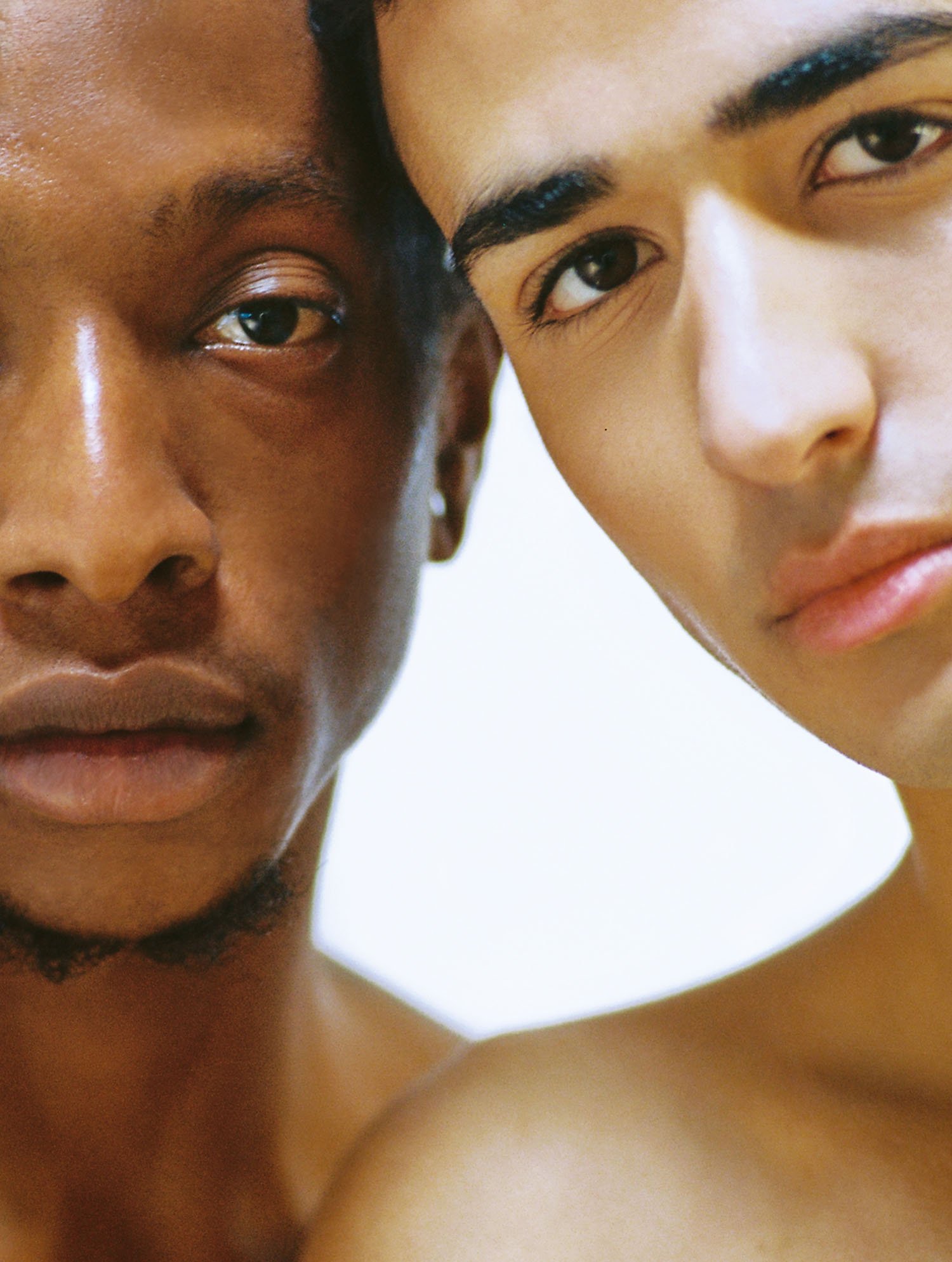On The Way To Jerusalem
Angel Chai Arviv is a photographer from Tel Aviv, Israel, who graduated from Bezalel Academy in Arts and Design with a BFA in Photography. On The Way to Jerusalem was created with Nir Malka, a MUAH artist, and models Dale Ratcliff and Meitar Atias. The editorial touches on the themes of identity and contrasts. The relation between the models is juxtaposed to the connection with the photographer on set. The main theme emerges through the exploration of intimacy and the models in movement. The viewer is invited to contemplate the dance and the distinctive bond that is created from the closeness of the physical bodies.
The project was photographed in Lifta, an Arab village near Jerusalem known for its beautiful nature reserve. The contrasts come with the location, the models, and the tension between religious and secular people, gay and straight. Angel explains his fascination with the topic, “I believe that the interaction of two non-identical things is always interesting. It always leaves a mark on me, and I think, on the viewer as well.” We speak with Angel about his practice and process of creating a narrative in photography. We discuss his way of working with models, which comes from a more personalized approach, and his desire to relate to the viewer through his work.
‘I photographed most of my projects during this trip, which took over five years. On The Way To Jerusalem is the last project, filmed in Lifta, an Arab village on the outskirts of Jerusalem.’
Thanks for the invitation, it's very flattering to me. I’m Angel Chai Arviv, 33 years old, from Tel Aviv. I was born and raised in Pardes Hanna until the age of 16, then I moved to the big city. I graduated with a degree in Photography from Bezalel in 2020, then I had a trip which became extremely significant for me. I photographed most of my projects during this trip, which took over five years. On The Way To Jerusalem is the last project, filmed in Lifta, an Arab village on the outskirts of Jerusalem. It is an abandoned village with a nature reserve. Today religious people are going there to bathe as they believe natural water is cleansing.
Photography was not always there for me. I was always fascinated with and felt a connection to the art of seeing life, but photography only came with the move to Tel Aviv. Suddenly the sights became cluttered, and I chose to document 'things like me' or 'sensitivities I identify with.' I also photographed fashion. Then I realized it was more about identities and contrasts. So, I decided to study in Bezalel to develop in this sphere.
‘I start any of my projects only after I am acquainted with the subjects. There must always be a connection. I believe it's always a good beginning which leads to a good image.’
I start any of my projects only after I am acquainted with the subjects. There must always be a connection. I believe it's always a good beginning which leads to a good image. For this project, photographed in Lifta, I casted two people. I bought film (I'm an analog photographer). I also wanted to have something ‘clean’ among the ruins of the place, so I decided to bring a white background. I'm usually more goal-oriented, but this time, I wanted to see how the subjects would react to me, to the place, and to each other and see how everything unfolds. I just let life happen.
I always work with contrasts. I believe that the interaction of two non-identical things is always interesting. It always leaves a mark on me, and I think, on the viewer as well. In Lifta, there are natural, small water pools surrounded by buildings from the 16th century. We went into one of them, and I asked the models to undress and cuddle while the shooting was happening.
In the past, the naked body was identified with cheap culture, but the body is also the most authentic to the person. This contrast fascinates me. I'm always more embarrassed than the person I'm photographing. I feel we are all committed to photography during the filming. The subjects usually are open, but I always feel embarrassed, especially when they are without clothes. I'm very sensitive. It seems to me this can be seen in my photography, in the games of light and shadow.
After finishing with this set, we went outside. There were at least 30 worshipers. The models got dressed, and we tried to create a natural scene. The models were able to move so gently; one of them is a dancer, and the other a doctor. We worked on the contrast between religious versus secular and gay in Jerusalem. The city is always such a crowded place. There were a lot of gazes during the shoot.
‘Whether the subject is a model or a non-model, working with them is challenging, taking down the layers while having a conversation on set, peeling those layers until they come to their truth, the truth I identify with.’
As a photographer, I constantly like to choose unconventional people. Whether the subject is a model or a non-model, working with them is challenging, taking down the layers while having a conversation on set, peeling those layers until they come to their truth, the truth I identify with. I never know what interaction photography will bring, while examining boundaries, and I’m always willing to explore different and new interactions. I’m going in unison with the moment. I think I always go on set knowing that everyone is important and everyone wants their ‘fifteen minutes of fame.’ Everyone wants to be remembered (including myself) through the theme or the photo. When the subject looks at you through my image, I think you can relate to them, or even to a piece of me.










